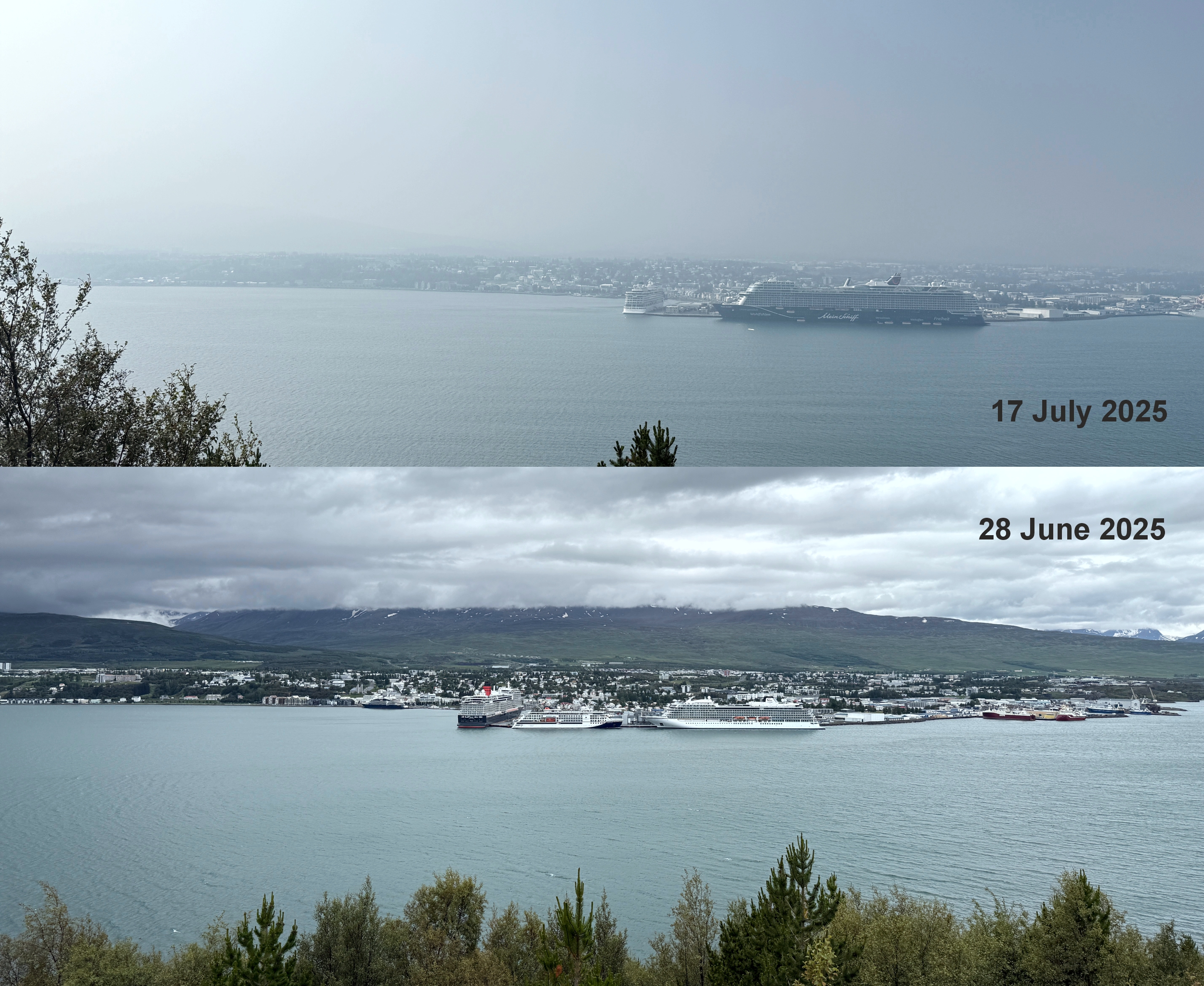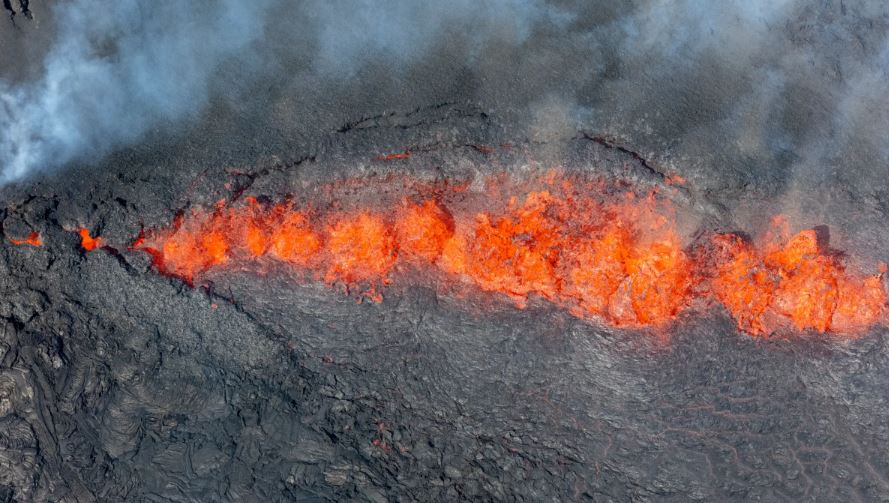July 17, 2025 – Iceland - The ongoing volcanic eruption on the Reykjanes peninsula continues to make its presence felt, not just in the immediate area, but across large parts of Iceland, where air quality has deteriorated significantly in recent days. Towns in the north, including Akureyri, are now experiencing elevated levels of air pollution, though experts remain divided on the exact cause.
The eruption, which began on 16th July, is centered in the Sundhnúkar crater row, northeast of Grindavík, and has been producing lava flows and volcanic gases, particularly sulfur dioxide (SO₂), which can travel vast distances under the right wind conditions.
A Visual Contrast
The impact of the pollution has been clearly visible in Akureyri. Two photographs taken from the same vantage point, a rest area across the fjord from the town, highlight the dramatic change. The first, taken on 28 June, shows a typical northern summer day: slightly overcast but clear. The second, taken yesterday, 17 July, captures the town shrouded in a grayish mist, illustrating just how thick the air has become in the wake of the eruption. The air pollution in Akureyri recorded higher values than are commonly registered in polluted megacities around the world.
Lava and Gas, But No Immediate Threat to Infrastructure
As of now, the eruption has not threatened critical infrastructure, though lava continues to flow from several fissures. The Icelandic Meteorological Office and Civil Protection authorities are monitoring the site closely. Meanwhile, volcanic gas emissions, especially SO₂, are raising health concerns far beyond the eruption zone.
Winds Spread Pollution Across the Country
Meteorologists report that southeasterly winds are carrying the volcanic gases from Reykjanes over southwest Iceland, across Snæfellsnes, and then northward toward the Westfjords, Skagafjörður, and Eyjafjörður, where towns like Sauðárkrókur and Akureyri have recorded increased pollution levels.
In Akureyri, fine particulate matter (PM10) levels rose above health limits on Wednesday evening and remained high through Thursday. Some experts, like Bjarki Friis from the Icelandic Meteorological Office, say this is likely linked to the Reykjanes eruption, even though gas concentrations are significantly lower than in the eruption zone itself.
“While sulfur dioxide levels in Akureyri are ten times lower than in Reykjanesbær yesterday, the air is still unhealthy for vulnerable groups,” he said, advising residents not to let children sleep outside.
However, not all scientists agree. Steinunn Helgadóttir, another natural hazards specialist, suggests that the pollution could be dust from Iceland’s highlands, or even particulate matter from Europe, brought in by shifting weather patterns.
Health Advisories in Place
Authorities are urging people, especially those with respiratory conditions, children, and the elderly, to limit outdoor activities in affected areas. Windows should be kept closed when pollution levels are high, and residents are encouraged to follow air quality updates from the Icelandic Environmental Agency and the IMO.
A Reminder of Iceland’s Volcanic Reality
This is the 12th eruption on the Reykjanes peninsula since 2021, underscoring the region’s entrance into what geologists believe is a decades-long volcanic cycle. While many of these eruptions have been relatively small and contained, they highlight how volcanic activity in southwest Iceland can quickly affect communities across the country, through both direct hazards and long-range air pollution.
Source:Veðurstofa Íslands, Ruv.is


